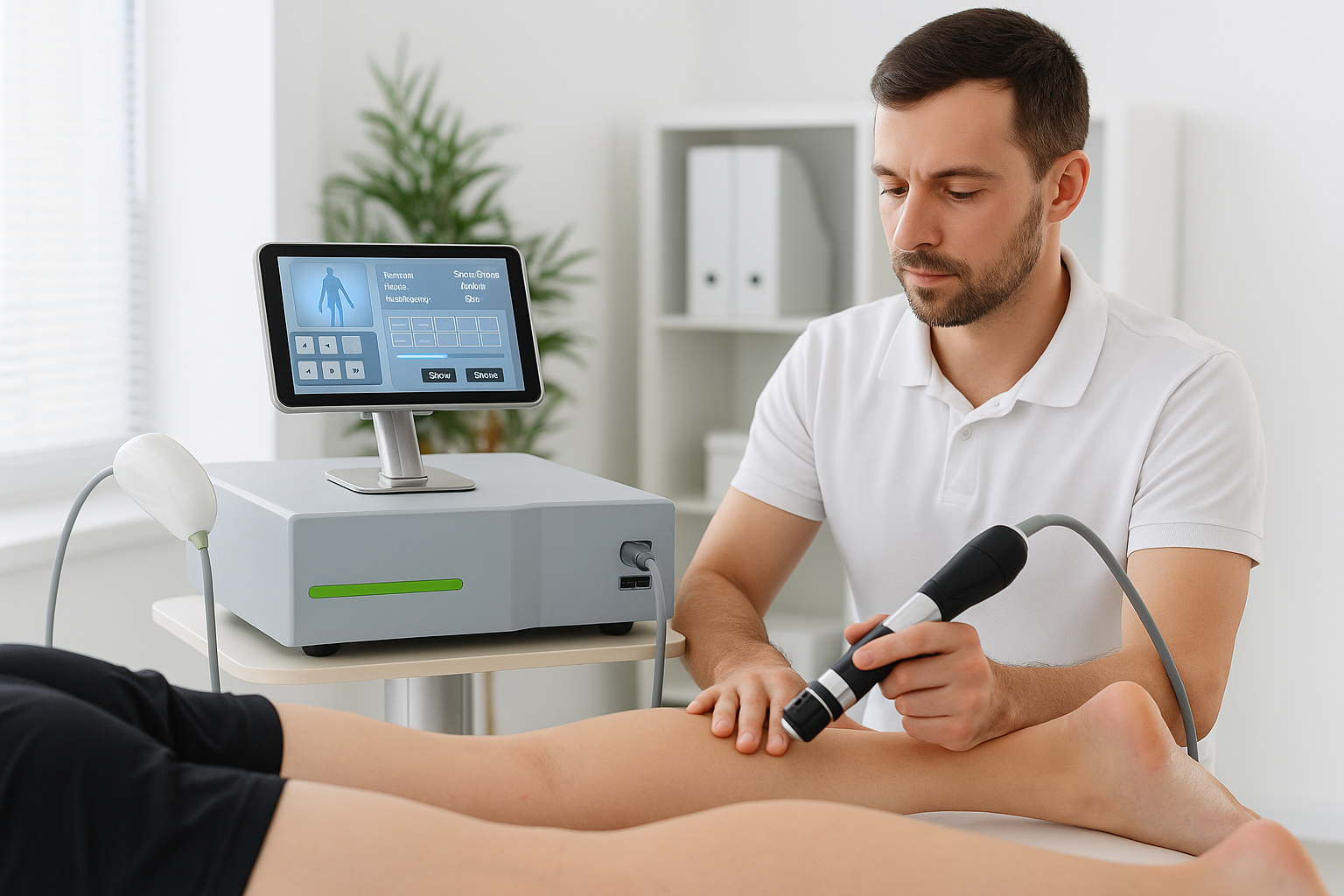Introduction: Understanding Chronic Musculoskeletal Pain
Living with chronic musculoskeletal pain can be overwhelming, draining both physical and emotional energy. Many individuals struggle with limited mobility, recurring discomfort, and an endless cycle of temporary solutions that fail to address the root cause. Patients often try medication, injections, or even invasive surgeries, only to find that pain returns over time. This ongoing battle can leave people frustrated and searching for better answers.
Pneumatic shock wave therapy offers a clinically proven, non-invasive solution for chronic pain management. By using high-energy acoustic waves to stimulate healing, it improves blood circulation, accelerates cell regeneration, and supports tendon and ligament healing. This innovative approach has gained recognition among physiotherapists, sports medicine specialists, and rehabilitation experts worldwide.
If you’re seeking a safe and effective alternative to surgery or long-term medication use, pneumatic shock wave therapy may be the solution worth exploring further.
What Is Pneumatic Shock Wave Therapy and How Does It Work?
Pneumatic shock wave therapy is a non-invasive treatment that delivers high-energy acoustic waves to targeted musculoskeletal tissues. These waves penetrate deep into the affected area, stimulating biological responses that enhance circulation, promote tissue repair, and reduce inflammation. The therapy is particularly effective for tendon and ligament healing, chronic pain management, and accelerating recovery from sports-related injuries.
Unlike surgery or long-term medication, shockwave treatment addresses the underlying causes of pain rather than just masking symptoms. This makes it a powerful tool in modern physiotherapy treatments and rehabilitation practices.
Why Should You Consider This Therapy?
Patients, athletes, and rehabilitation specialists value pneumatic shock wave therapy for its efficiency and safety. It has been widely used for conditions like tendonitis, plantar fasciitis, tennis elbow, calcific shoulder tendinopathy, and muscle pain. With minimal downtime, individuals can return to daily activities quickly, making it a practical solution for busy lifestyles. Keep reading to discover its full range of applications, benefits, and clinical insights.
Key Questions About Pneumatic Shock Wave Therapy
What conditions can pneumatic shock wave therapy treat?
It is commonly used for tendonitis, plantar fasciitis, calcific shoulder tendinopathy, tennis elbow, muscle pain, and delayed healing fractures.
Is pneumatic shock wave therapy painful?
Some patients may experience mild discomfort during treatment, but the intensity can be adjusted for comfort.
How many sessions are typically required?
Most patients need between 3 to 6 sessions, depending on the severity and type of condition.
Are there any side effects?
Side effects are minimal and may include slight swelling, redness, or soreness that usually resolves within a few days.
Who should avoid this therapy?
It is not recommended for patients with blood clotting disorders, cancer in the treatment area, or those who are pregnant.
Contents
- Introduction: Understanding Chronic Musculoskeletal Pain
- What Is Pneumatic Shock Wave Therapy and How Does It Work?
- Why Should You Consider This Therapy?
- Key Questions About Pneumatic Shock Wave Therapy
- Clinical Benefits and Applications
- Comparison With Other Treatment Methods
- Conclusion
Clinical Benefits and Applications
Pneumatic shock wave therapy provides multiple benefits across clinical and sports medicine applications:
| Clinical Application | Benefit |
|---|---|
| Tendonitis | Promotes tendon healing and reduces inflammation |
| Plantar Fasciitis | Relieves heel pain and accelerates recovery |
| Tennis Elbow | Decreases chronic elbow pain |
| Calcific Shoulder Tendinopathy | Breaks down calcium deposits |
| Muscle Injuries | Improves blood flow and tissue regeneration |
| Delayed Bone Healing | Stimulates bone repair processes |
This therapy is particularly popular among athletes who require quick recovery to maintain peak performance.
Comparison With Other Treatment Methods
When evaluating treatment options, it is essential to understand how pneumatic shock wave therapy compares to alternatives:
| Treatment Type | Invasiveness | Recovery Time | Long-Term Effectiveness |
|---|---|---|---|
| Pneumatic Shock Wave Therapy | Non-invasive | Minimal downtime | High |
| Surgery | Invasive | Weeks to months | Moderate to high, with risks |
| Medication | Non-invasive | None | Low, often temporary |
| Steroid Injections | Minimally invasive | 1–2 days | Short-term relief |
This comparison highlights why many medical professionals and patients prefer pneumatic shock wave therapy as a first-line approach to pain management.
Conclusion
Pneumatic shock wave therapy is transforming how chronic musculoskeletal pain is managed. By delivering acoustic wave therapy directly to affected tissues, it promotes natural healing without invasive procedures or long-term reliance on medication. With proven effectiveness for tendon and ligament healing, sports injuries, and chronic pain management, it is an ideal solution for patients, athletes, and rehabilitation specialists.
If you are ready to explore non-invasive pain relief that supports faster recovery, discover more about our advanced Shockwave Therapy Machine Model SW13B.




